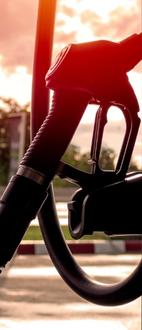What is Greenwashing? How to Spot It and Avoid It.
Posted on Nov 15th 2022
Greenwashing: How to Spot and Avoid It | EcoEnclose
The word greenwashing conjures up imagery of manipulation, corruption, and profiteering. According to Investopedia, “greenwashing” refers to “an unsubstantiated claim to deceive consumers into believing that a company’s products are environmentally friendly or have a greater positive environmental impact than what is true.” And yes, we certainly believe any company that is actively and willfully “greenwashing” should be called out publicly and made to stop its deceitful practices.
However, we’ve found that companies exaggerating their ecological efforts or impact, or showcasing false information, may not necessarily be trying to mislead. For example, some have made investments in making their operations more eco-friendly, and they then look for ways to showcase their efforts to generate goodwill for their brand. But unfortunately, these marketing efforts then become simplistic and exaggerated. In some cases, we’ve found that brands have inaccurate information about what is and aren’t a sustainable improvement and, therefore, may inadvertently be broadcasting an incorrect effort or impact.
Finally, and perhaps most frequently, we see situations in which a company tries so hard to solve one issue. Still, their solution creates broader detrimental environmental impacts that could do more damage than their original strategy. We see this often in packaging, as brands seek to solve for something like “curbside recyclability” without considering the entire lifecycle of the material they are swapping in.
Because of these nuances, we think about “greenwashing” on a spectrum.
Deceitful Practices:
Malicious and deceitful practices are the worst greenwashing in our eyes. We hope to see these companies called out, face intense legal consequences, and be made to reconcile publicly with their poor practices.
False Marketing:
This rampant practice of using unsubstantiated terms or insincere imagery makes it difficult for a consumer to distinguish between genuinely ecologically superior products and products that are very good at marketing and branding. We appreciate seeing these brands called out, and we hope legal, activist, and consumer pressure can correct these misleading branding campaigns.
Broad Statements:
Not using specificity or contexts is common and, in some cases, may be driven by an active and intentional desire to be misleading. In other cases, it isn’t easy to be specific and nuanced in marketing efforts. Brands prematurely share goals and aspirations before they can back these statements up. In these situations, we hope brands are pushed for more information and take steps to revise, clarify, and specify their statements.
Solving One Problem and Inadvertently Creating Another:
This is widespread and common even among the most well-intentioned, passionate, and committed companies. There is a plethora of wrong information about what is and isn’t sustainable and how to make choices that truly benefit the planet. Further, there are many ways to measure sustainability - ranging from resource usage to carbon footprint to waste creation. This added complexity doesn’t mean that these examples of inaccurate statements should not be addressed and corrected; only that our collective eco-conscious community can address them while also acknowledging the likelihood that underlying intentions were well aligned.
Ultimately this comes from a place of positive community-building. We believe that collectively, brands committed to doing business in a way that benefits people, the planet, and their bottom line, can have a tremendously positive impact on the world. As companies work towards this ultimate goal, there will be many bumps. The best thing we - as consumers, as suppliers, and as partners in the broader EcoAlly community - can do is to guide each other towards the best decisions possible.
Our goal is to help you spot and avoid greenwashing, and to encourage companies to stop greenwashing practices. Read on for greenwashing examples and sustainability claim inaccuracies.
Deceitful Practices
Active Lies About a Company’s Actions and Their Impact on the Planet

Volkswagen
In 2015, the EPA learned that VW cars sold in the US had a “defeat device” - or software - in diesel engines. The device could detect when they were being tested and would change the performance accordingly to improve results, meaning that many VW cars in the US were cheating emissions tests.
This effort was an attempt to back VW's massive marketing campaign, which trumpeted the so-called low emissions of its diesel cars. However, VW admitted they fitted over 11 million vehicles with the so-called “defeat device.”

IKEA
Many companies falsely state that their paper or wood products are FSC® certified - a rampant and very troubling practice. Sometimes packaging providers will put the FSC® certified claim on their products, even though their converter is not FSC® certified, and therefore there is no way for the product to be certified. Some will gain chain of custody certification and have one line of products truly derived from sustainability-sourced wood. Then, they gain FSC® certification and then find loopholes that allow them to cut down trees in unsustainable ways.
Because this practice is so rampant, brands who rely on virgin wood and turn to FSC® certification must vet their supply chain and confirm that their product's wood is produced and logged as thoughtfully as possible. Recently, Ikea came under fire for failing to do this. The company moves a lot of furniture that claims to be FSC® certified. However, investigations found that their FSC® certified children's furniture was made from illegally logged wood in Siberia.

BP
In 2001, British Petroleum changed its name to Beyond Petroleum. However, 20 years after the name change from 2016 through 2021, BP spent about $3.2 billion on clean energy and $84 billion on oil and gas.
A company that pays over 96% of its budget on petroleum but decides to call itself “beyond petroleum” is a clear example of actively deceitful greenwashing.
False Marketing
By Using Unsubstantiated Terms or Insincere Imagery

H&M
This type of greenwashing is common in fashion brands. In 2019, H&M launched its line of “green” clothing titled “Conscious,” which the company claimed used “organic” cotton and recycled polyester. However, it became clear that it was only “sustainable fashion pieces that make you both look and feel good.”
As a result, the Norwegian Customer Authority rightfully criticized H&M for their “misleading” marketing campaign because “the information given regarding sustainability was not sufficient, especially given that the Conscious Collection is advertised as a collection with environmental benefits.”

BooHoo
BooHoo announced they would ban all wool in their clothing. However, when they made this announcement, none of their products contained wool. Even more disturbing, wool is not necessarily a terrible fabric for the planet, though BooHoo's marketing efforts seemed to be trying to showcase it as evil.
Their wool-like products were virgin, fossil fuel-derived synthetic alternatives, and investigations into their business practices revealed that they were significantly underpaying and exploiting their workers.

Huggies
Huggies created a Pure & Natural line of diapers that has beautiful green, leaf-adorned packaging, screaming “organic, natural and healthy” to the many tired moms who are comparing different brands on the shelf and trying to figure out which one best balances sustainability and their child’s wellness.
A closer review revealed Huggies only put a small piece of organic cotton on the outside of the diaper.
Broad Statements
Without Specificity or Context

Nestle
In 2018, Nestlé - whose packaging represents a high percentage of worldwide plastic pollution - released a statement saying it had “ambitions” for its packaging to be 100% recyclable or reusable by 2025. Many environmental activists, including Greenpeace, called Nestle out immediately that their commitment lacked specificity on how Nestle would meet this goal and the milestones needed over the seven-year timespan.
This criticism helped hold Nestle accountable; since it generates such a large percentage of single-use plastic packaging (an alarming amount of which becomes litter), it should be bound to specific, ambitious goals related to packaging circularity.

SC Johnson
SC Johnson released bottles made from 100% “ocean plastic.” Similarly described packaging has been put forth by Method and several Chinese packaging manufacturers who then distribute through Alibaba to domestic packaging distributors. However, "ocean plastic" is misleading, and brands must be transparent with their consumers, even when this messaging requires nuance and detail.
When most people hear the phrase “ocean plastic,” they envision litter pulled from the ocean and recycled into new products. In reality, “ocean plastic” refers to “ocean bound plastic,” which is plastic removed from regions that are heavy contributors to ocean plastic - such as the Philippines and Haiti. The concept is that if these regions set up robust plastic banks and waste management operations and incentivize citizens to pick litter and sell this letter to these banks, it will drive down the volume of plastic entering our oceans. Using ocean-bound plastic is a significant step forward for the planet because it helps fund and incentivize waste management systems in often under resourced coastal communities.
Making Inaccurate End-of-Life Claims
We recently received a newsletter from a brand we love that made a variety of claims, such as “this glass bottle will simply turn into sand” and “#7 plastics are a type of good plastic.” The brand in question is trying to impact the planet positively. However, these claims are 100% untrue. We recognize that sustainability is complex making it easy for teams within a brand to get and absorb bad information and then share that false information. It also makes it easy to be in a situation where two very passionate and committed people disagree about what packaging strategy is better for the planet. However, we believe that when brands - especially those that consumers turn to as sustainability experts - accidentally share false information, they should follow up with corrected language as soon as possible.
Solving One Problem and Inadvertently Creating Another
Ultimately Creating More Environmental Damage

Amazon
To make more of its packaging curbside recyclable, Amazon helped design a cushioned paper mailer with two layers of paper that sandwich expanded plastic foam. Because the plastic foam dissolves and represents a fraction of the mailer’s weight, the mailer is curbside recyclable. Unfortunately, it's made with virgin paper, and there are no verifications that its source material is not drawn from old-growth forests.
As the largest retailer in the world, Amazon’s paper packaging sourcing has a significant impact on the planet, and the fact that these mailers are made with virgin and unverified content is very concerning.

Starbucks
In 2018, Starbucks released a “straw-less lid,” as part of its sustainability efforts to address an increasing demand among consumers to do away with plastic straws. However, the new lid contained more plastic than the old lid and straw combination.
Amazon and Starbucks have heavily promoted their respective “packaging improvements,” patting themselves on the back for a job well done. But their efforts solve one specific area of concern related to their packaging. We believe their solutions do not account for a broader view of sustainability and are likely to create more harm than the original issues they sought to address.

Tree Planting Campaigns
How often do we see D2C brands promoting their core business model as, “buy a t-shirt, plant a tree”? Even packaging providers out there heavily encourage tree planting as a salve on purchasing packaging. It is a compelling ecological strategy at its surface, and tree planting can be done successfully. However, environmentalists are generally aligned that tree planting should be done after more critical efforts are pursued by companies. These efforts include ensuring packaging is 100% recycled or at least tree-free, minimizing the number of trees cut down to make fabrics or other raw inputs for your products, minimizing the impact of your product’s materials and manufacturing on carbon emissions and pollution, etc.
Additionally, many tree planting initiatives are detrimental to the planet, as they are leading to increased destruction of primary forests and introducing monocrop, often non-native tree species, into lands that would be far better off if they are rewilded or reforested. When companies promote tree planting, but it isn’t easy to find other, deeper, and more impactful actions they are taking to run their business more eco-consciously, this could be a case of active or inadvertent greenwashing.
Promoting An “All Compostable” Packaging Strategy
Or Promoting Even More Problematic “Degradable” Packaging
We often see well-intentioned and passionate brands highlighting that every element of their eCommerce package is compostable. They often include statistics around the amount of plastic that is recycled as a driver for why they have chosen compostable. Some brands also add claims such as, “no matter where the compostable packaging ends up, it is better for the planet than the plastic it is replacing.”
Our extensive compostable and bioplastics research has shown us that (1) they are a very important part of the future of sustainable packaging, while (2) they are not a silver bullet solution, and most of today’s compostable or degradable eCommerce packaging causes a lot more harm than good. However, brands that choose these packaging strategies should be as forthcoming about the facts and data driving their packaging and decisions as any other brands, mainly if they use this strategy to showcase their commitment to sustainability.
Examples of ways we’ve seen compostable packaging promoted problematically and disingenuously include:
Statistic Sharing:
Some brands highlight statistics that a small percentage of plastic is recycled as a rationale for their switch to compostable bioplastic. However, they don’t include data on how much compostable packaging is composted. If this data were shared, consumers would see that compostable plastic is as or more likely to end up in the landfill as recyclable plastic. Sharing both statistics allows consumers to see the broader and more nuanced picture.
Bioplastics:
Some brands accidentally promote compostable bioplastics as the solution to marine plastic pollution or landfill space. But, when most compostable plastic ends up in a landfill or a marine environment, it will remain stable for a very long time - just like any other plastic. As such, the claim that “it doesn’t matter what happens to compostable plastic at the end of its life” is inaccurate.
Degradable Plastics:
Some brands have switched to “degradable” plastic, which often refers to plastic designed to biodegrade in landfill rapidly. This end-of-life scenario sounds good at its surface until we realize we don’t want trash to biodegrade in landfills. This type of biodegradation is a leading cause of methane, one of the planet’s most problematic types of greenhouse gases.
How To Avoid Inadvertent Greenwashing Within Your Brand
Many examples of brands that greenwash deliberately and maliciously, including several outlined above. If you’re reading this point, chances are - this is not how your brand operates. Instead, you are likely a company or person genuinely committed to sustainability and running your business in a way that considers people, the planet, and profits in parallel.
However, as some of the examples above illustrate, it is easy to sell your sustainability efforts so that they can feel like a more subtle form of greenwashing or inadvertently convey false or misleading information to your customers. The following are tips to help you avoid this position.
- Have a long-term vision and sustainability framework. There are so many soundbites related to sustainability, and it is easy to get distracted or excitable. The most forward-thinking and impactful brands have a stated mission about sustainability, with a clear framework and method of measurement. Some are minimizing their carbon footprint. Others are seeking to reduce plastic. Others are focused on circularity. Set your vision, explain why it is your focus, make decisions supporting your framework, and constantly explain why you are making these decisions. Here at EcoEnclose, our Sustainable Packaging Framework drives every one of our decisions to ensure that our actions, big and small, gradually move us towards our Vision For Sustainable Packaging.
- Promote your eco-conscious strategies in nuanced, detailed ways. Help your consumers understand how your actions support your vision. Companies don’t get into trouble for pursuing eco-friendly strategies! They get in trouble when the marketing claims they are making about their plans overstep (or even run counter to, at times) the actual positive impact they are having. So an essential first step is to ask yourself, "am I pursuing an eco-improvement to support the planet and my sustainability vision, or to keep my marketing strategy?" As long as your efforts support your sustainability vision, you’re on the right track. Then ask yourself, “how can I promote my efforts in a way that resonates with my customers and helps me strengthen my sales, without overselling my efforts or impact to a point that my marketing is disingenuous?”
- Be specific about your claims. Avoid vague terms, such as “conscious,” “green,” or “biodegradable.” Use specific words and data wherever possible; 80% recycled with 40% post-consumer waste is much more detailed than “recycled.” Here at EcoEnclose, our Glossary of Sustainability Terms helps clariify our sustainability claims so that when you hear us say "eco-friendly packaging," you know we mean it.
- If you share data about why you avoid one material, share similar data about the replacement material. If your brand is minimizing plastic, you may say, “we are minimizing plastic because it is a material that relies on the fossil fuel industry, has low recycling rates, and poses grave threats to marine life when it becomes litter.” When you then talk about how you are replacing plastic with paper, you might add, “we have chosen to replace plastic with paper. Unfortunately, today paper is reliant on logging and the logging and pulping industry. However, we chose this material because it is curbside recyclable and does not pose a threat to marine life. Over time, we are committed to using as much recycled paper as possible, to ensure our new packaging strategy does not put pressure on the old growth forests our world needs to protect.”
- Avoid touting something as a silver bullet. Talk about your strategy and acknowledge that elements of it fall short. It is easy to fall into the trap of thinking, "I’ve switched to X material, and I’m excited about it, so let me tell the world how excellent this decision is!" The problem is no material today is perfect. No raw input to your product or packaging is a silver bullet, ecologically speaking. Move from plastic to paper, but acknowledge the drawbacks of paper. Move from single-use to reusable, but recognize that the reusable alternative must be utilized a specific number of times to be an ecological win. Move from virgin to recycled, but acknowledge that the recycled content is still being downcycled.
- Don’t be afraid of nuance. Many people may read the above and think, "but our customers have a small attention span. How can they be expected to read this much info?" First, we believe customers can handle this level of nuance, and sharing this much can help you stand out as a genuinely respected expert in your industry. We also recognize that you’ll have to tier how you share information as a brand. Your headline may say, “We have eliminated plastic with this new packaging!” Your next, smaller point may be, “this new paper alternative is made with 50% recycled content. And we’re not stopping here. We look forward to constantly making our packaging more circular and more planet-friendly.” And then, you can link to a more detailed overview of why you’ve chosen paper over plastic and your next steps. Different consumers will absorb different levels of detail here. By sharing all the information, you are helping to create a world that recognizes and appreciates the nuance in all sustainability decisions.
- Do tree planting campaigns right. If you pursue a tree planting campaign, ensure you have first found ways to run your business more eco-consciously. Then research your tree planting partner at length, and check in with them regularly to ensure they are not causing more harm than good in their partner communities.
Connect With Us
There is a lot of greenwashing in the world of packaging - much of it inadvertent and well-intentioned. EcoEnclose is here to help brands navigate the complicated world of sustainable packaging, helping match your company with circular shipping supplies that will live up to your eco values.
We’d love to become your eco-friendly packaging partner so you can be proud of how you ship.
About EcoEnclose | Talk With A Packaging Expert


